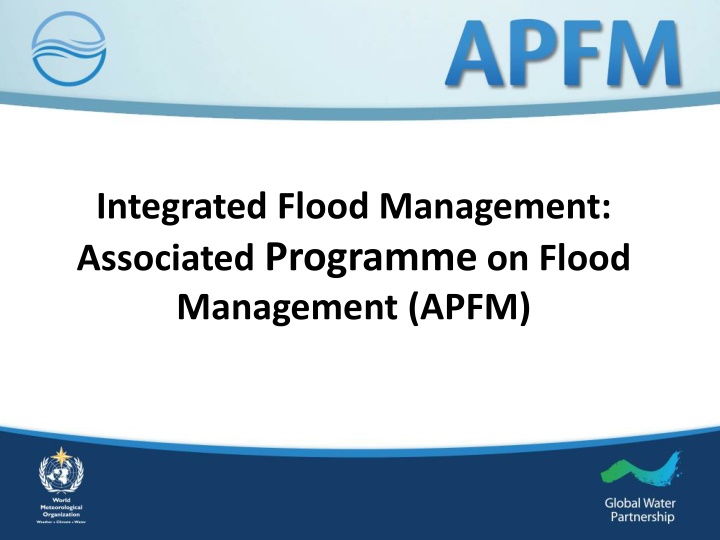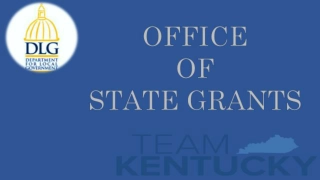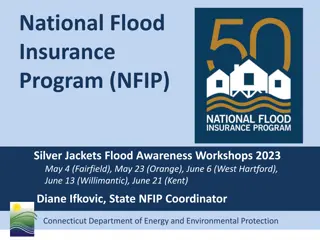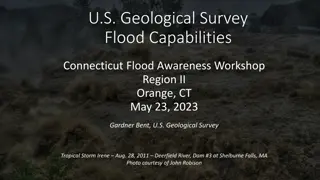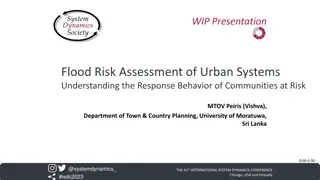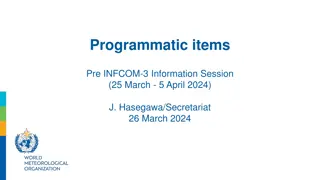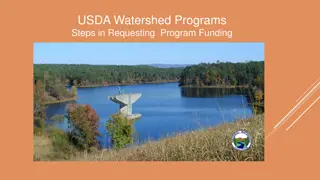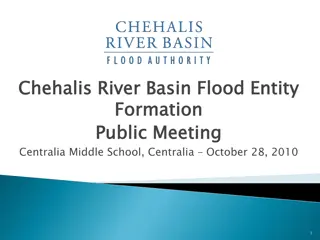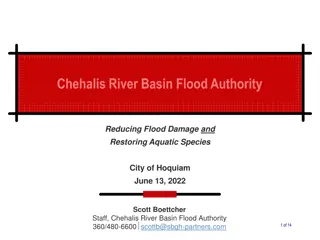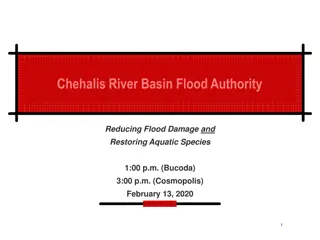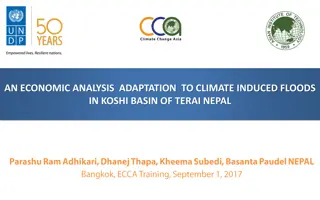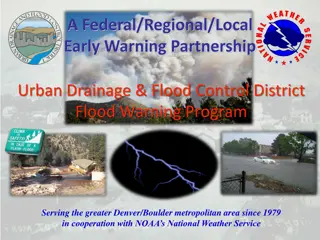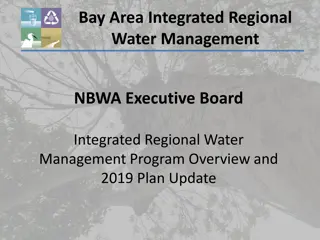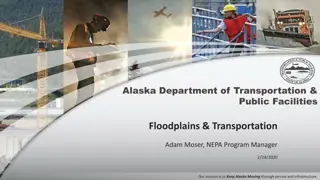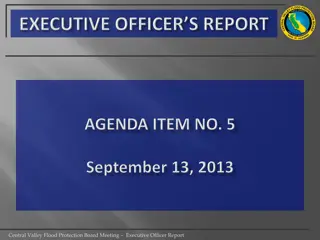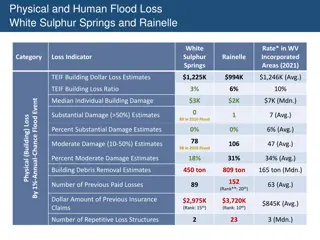Integrated Flood Management and Associated Programme
Integrated Flood Management and Associated Programme on Flood Management (APFM) address the necessity of IFM, impacts of hydrometeorological hazards, WMO's role in IFM, and initiatives like E2E Flood Forecasting. APFM, founded in 2001, aims to support countries in implementing IFM by offering technical assistance and capacity building.
Download Presentation

Please find below an Image/Link to download the presentation.
The content on the website is provided AS IS for your information and personal use only. It may not be sold, licensed, or shared on other websites without obtaining consent from the author.If you encounter any issues during the download, it is possible that the publisher has removed the file from their server.
You are allowed to download the files provided on this website for personal or commercial use, subject to the condition that they are used lawfully. All files are the property of their respective owners.
The content on the website is provided AS IS for your information and personal use only. It may not be sold, licensed, or shared on other websites without obtaining consent from the author.
E N D
Presentation Transcript
Integrated Flood Management: Associated Programme on Flood Management (APFM)
Why is IFM necessary? Source: WMO-No. 11.23 (2014)
Impacts of hydrometeorological and climatological hazards (1955 2014) Human losses by decade (millions) Economic losses by decade (billions of US$ adjusted to 2013) 1,200 2.50 1,000 2.00 800 1.50 600 1.00 400 0.50 200 - - 55-64 65-74 75-84 85-94 95-04 05-14 55-64 65-74 75-84 85-94 95-04 05-14 Epidemics and insect infestations are not included Reduction of the number of victims thanks to greater effectiveness of early warning systems and prevention measures 3
Why is the WMO involved in IFM? National Hydrological Services are responsible for: Providing services in support of national needs including Protecting of life and property Safeguarding the environment Contributing to sustainable development Promoting capacity-building Active involvement in the planning, development and management of water resources projects WMO has a mandate to: Advocate for the widespread adoption of IFM at the basin, national and international levels (Resolution 20 (Cg-XV)) Assist Members in flood management policy, strategy development, and capacity building
Associated Programme on Flood Management (APFM) Joint Initiative Technical Support Unit embedded in the WMO Hydrology and Water Resources Branch Founded in 2001 Contributors FOEN (Switzerland), MAE (France), CONAGUA (Mexico) and USAID (in the past: Japan, the Netherlands, Germany and Italy) Mission To support Members/countries in implementing Integrated Flood Management
End-to-end (E2E) Flood Forecasting and Early Warning Initiative ! MODELLING & FORECASTING EARLY WARNING DISSEMINATION DECISION SUPPORT RESPONSE TO WARNING REAL-TIME DATA COLLECTION Flash Flood Guidance System (FFGS) Global Hydrometry Service Facility (GHSF) (APFM) Associated Programme on Flood Management Coastal Inundation Forecasting Demonstration Project (CIFDP) Meteorological, Climatological and Hydrological (MCH) Database Management System DEWETRA Platform Preparing for Extreme And Rare events in coastaL regions (PEARL) Severe Weather Forecasting Demonstration Project (SWFDP) In support of the functions of National Meteorological and Hydrological Services
Need to consider the water cycle as a whole and interaction with people A river basin is a dynamic system with many interactions/fluxes between land, water bodies and the atmosphere Flood and drought management Effective use of waters Ground water and surface water interaction in flood plains Flood Management is water management that is strongly linked to land management and people
IFM is interdisciplinary, flexible and participatory Hydrometeorology Engineering Social Sciences Law Economics International National Basin Local SCIENTIFIC DOMAINS SPACE Developers, Drainage authorities, Water/sewerage service providers, Insurers, Emergency Services, Local authorities, Strategic industries, Dam/reservoir operators, Irrigators, Farmers/Forestry, Environmental Regulators TIME STAKEHOLDERS Planning Protection/Prevention Emergency Response Reconstruction and Rehabilitation
Flood Risk Mitigation: from theory to practice Elevated exposure due to uneffective (or absent) land use planning (and maintenance), land use planning, basin management Lack of information and preparedness defence planning, awareness raising and education to risk Structural measures Warnings, civil DISASTER DISASTER Residual risk Hazard flood mapping Flood forecasting, Risk sharing
How can APFM help? Promoting IFM to prevent the disaster from repeating itself Reducing risk exposure (flood risk management) Build back better End-to-end early warning systems Advice on flood management through a HelpDesk Training , capacity building, and advocacy material Building a network of institutions supporting a multi-disciplinary approach Hands on assistance to Members Project proposal preparation Flood risk management project implementation
Integrated Flood Management HelpDesk MEMBERS/COUNTRIES Request for assistance, preparation of project proposals, advice and supervision on implementation Technical expertise SUPPORT BASE http://www.apfm.info/ifm-helpdesk
30 Support Base Partners Specialized institutes in various disciplines relevant for IFM
Guidance Materials Integrated Flood Management Concept Paper Flood IFM Tool Series Training Manuals Management Policy Series Plus 22 Case Studies from Africa, Asia, Central & North America, Europe, South America and the South-West Pacific http://www.apfm.info/publication
Capacity building & training What is needed? Identification of problems and gaps What is possible? Presenting existing capacities and opportunities IFM for flood hazard mapping, Japan APFM Provides: Participatory risk assessment at Ban Buprham, Thailand Vocational training (short training and workshops for different target groups) Material on specific topics and contact with experts : Integrated flood management Urban flood management E2E EWS - Floods (under development) Community-based approaches Development of National Strategies applying the IFM concept Measuring rain water from standard equipment installed National strategy on IFM, Lao PDR at Ban Keomany, Lao PDR
Regionalpilot projects Aim of pilot projects: Develop and implement IFM concept and its application through demonstration (with third party funding) Pilot projects have been undertaken in: South Asia (community-based approaches) Africa (flood management strategies) Central and Eastern Europe (flash floods) Available through the HelpDesk: Assistance in development of proposals Support in securing funding from donors Technical supervision
Success indicators Institution requesting / Period 2009 - 2016 Launched in 2009 Around 221 requests received from more than 40 countries Used by: NGOs and private sector Academic institutions Governmental agencies International Organizations 45 40 35 Governmental agency 30 No. of requests Private/NGO 25 University/Academia 20 International Organizations 15 10 5 0 2009-2010 2010-2011 2011-2012 2012-2013 2013-2014 2014-2015 2015-2016
For more details: www.floodmanagement.info Thank you for your attention
